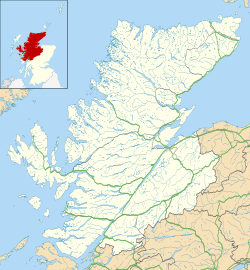Beglan
| |
|---|---|
 Ruins of the abandoned Beglan township | |
Location within the Highland council area | |
| Council area | |
| Country | Scotland |
| Sovereign state | United Kingdom |
Beglan (Beag-Ghleann in Scottish Gaelic) was a small township located in Glenmore Forest Park. [1] The earliest cartographic evidence of Beglan dates back to 1747. [2] The settlement was deserted by 1875. [3] [2]

